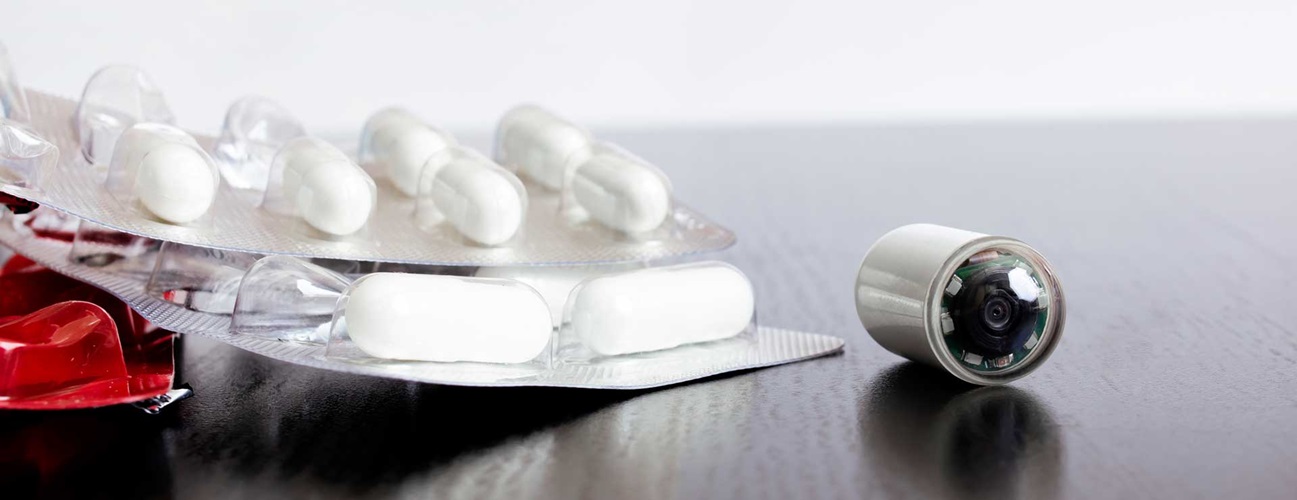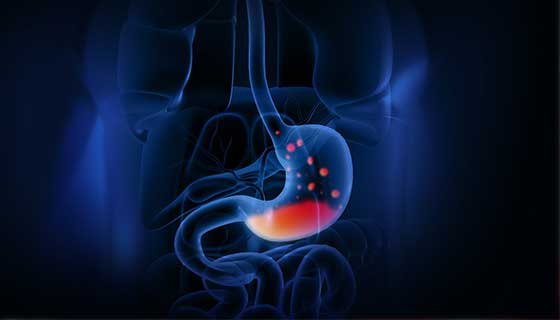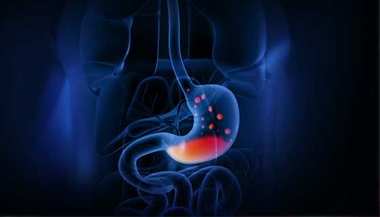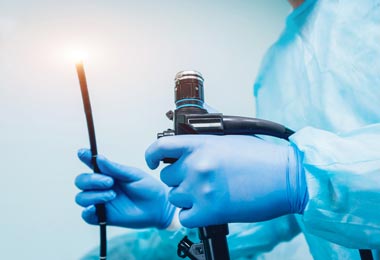Capsule Endoscopy
What You Need to Know
- A capsule, no larger than a vitamin pill, contains a tiny camera that takes pictures of the inside of your digestive tract.
- The capsule takes about eight hours to travel through your body, and can capture more than 50,000 images. You don’t feel it at all.
- The pictures are transmitted to a recorder through sensors attached to your body.
- This data can help a gastroenterologist see and diagnose a variety of GI conditions, such as polyps, ulcers and bleeding.
What is capsule endoscopy?
Capsule endoscopy is a noninvasive diagnostic procedure to visualize the inside of your digestive tract. You swallow a capsule that contains a tiny camera, a transmitter and a light. As it passes through your stomach, intestines, colon and rectum, the capsule takes thousands of pictures and transmits them to a recorder that you wear outside of your body.
Your doctor uploads the data from the recorder using a system that combines pictures into a video. These visualizations help identify problems in the digestive tract and formulate a diagnosis.
Types of Endoscopy Video Capsules
There are several types of endoscopy capsules that gastroenterologists use today. They differ based on factors such as:
- Number of cameras
- Quality of imaging
- Recording time
- Battery life
- Mechanism of data transmission
One type of endoscopy capsule doesn’t use a recorder and instead has internal data storage. To collect the data, the capsule needs to be retrieved after it passes through your body. For capsules that transmit data, recovery is not necessary — these capsules are more commonly used.
What conditions can be diagnosed using capsule endoscopy?
Capsule endoscopy can detect signs of digestive system problems and help diagnose a variety of conditions. Your doctor may recommend capsule endoscopy if he or she suspects you have:
- Crohn’s disease and other forms of inflammatory bowel disease (IBD)
- Gastrointestinal bleeding
- Celiac disease
- Ulcerative colitis
- Colon polyps or colon and rectal cancer
Capsule endoscopy may help your doctor:
- Confirm suspected Crohn’s disease
- Monitor celiac disease
- Explore the causes of unexplained weight loss or anemia
Capsule endoscopy can also help doctors visualize the colon interior in people who cannot tolerate sedation or other aspects of a colonoscopy.
Preparing for a Capsule Endoscopy
It’s important to follow your doctor’s instructions when preparing for a capsule endoscopy. Your doctor may ask you to:
- Stop smoking 24 hours before the test.
- Drink clear liquids the day before the procedure, such as colorless sports drinks, apple juice or other beverages you can see through when they are in a glass.
- Take a laxative, around 8 p.m. the night before the test, to clean your digestive tract so the camera can see the surfaces of your intestines. Your doctor will provide instructions on which laxative to use and how to prepare it.
- Fast after 10 p.m. the night before your procedure (don’t eat or drink anything, even water).
- Skip breakfast the day of the procedure. You can have a light breakfast in the morning on the day before the capsule endoscopy.
- Prepare your skin. Your doctor may ask you to shave an area on your belly or chest to be able to securely attach the sensors that receive data from the capsule.
- Disclose your medications. Tell your doctor about any medications you take. The doctor may provide instructions for when to take them so they do not interfere with the test. You may be able to take important medicines two hours before the test, or your doctor may ask you to wait several hours after you swallow the camera capsule.
- Wear loose-fitting clothes on the day of your appointment to allow room for the electrodes and the transmitter that will pick up data from the capsule.
What Happens During Capsule Endoscopy
When you arrive for your procedure, the doctor or nurse practitioner will fit you with all the necessary equipment to capture data from the capsule. The two main parts of this equipment are:
- Sensors to receive the data from the capsule. There are two ways to attach the sensors, which depends on the type of capsule and your doctor’s recommendations:
- A sensor array has multiple electrodes that are placed on your chest and belly using a gentle adhesive. They don’t hurt but can be uncomfortable.
- A sensor belt has built-in electrodes. You wear it around your waist. All of the wires are within the belt.
- A recorder to store the data from the capsule. As the sensors receive data, they send it to a recorder, which is about the size of a large calculator. You wear the recorder with a special sling or harness that goes across your chest and over your shoulder.
Once the equipment is ready, a nurse will activate the capsule and give you a sip of water to help swallow it. The capsule is about the size of a large vitamin pill, and is coated to make it easy to swallow.
What happens after swallowing the endoscopy capsule?
You can go home after you swallow the capsule and perform most of your daily activities while wearing the electrodes or belt. You will not feel the capsule as it moves through your digestive tract. Be sure to:
- Avoid strenuous exercise, sudden stops, and bending or jarring movements.
- Avoid MRI machines, ham radios, strong magnetic fields (such as those in airport/government building security areas) until the capsule is no longer in your body. You can use computers and phones safely.
Check the recorder. The nurse will tell you how and how often to check that the recorder (attached to the electrodes or belt) is receiving signals from the capsule. If the recorder doesn’t seem to be working, do not try to fix it yourself. Call your doctor.
Resume eating and drinking. Your nurse will give you detailed instructions on returning to your regular diet. The instructions will be similar to the following.
- First four hours after swallowing the capsule: nothing by mouth
- Four to six hours after swallowing the capsule: water only
- Six to eight hours after swallowing the capsule: full liquids, including broth and fruit juice
- Eight hours after swallowing the capsule: a light snack
If you have any nausea, vomiting, cramps or pain in your belly while the capsule is inside, call your doctor right away.
Return the equipment. You will return the electrodes or belt and recorder eight hours after swallowing the endoscopy capsule, or sooner if you have a bowel movement.
Flush the capsule. If the capsule does not appear in your bowel movements the first day after swallowing it, do not worry. It should pass the next day or so. Unless your doctor used a capsule with internal data storage, you don’t need to recover it — the capsule can be safely flushed down the toilet.
What to Expect After a Capsule Endoscopy
After you return the recorder, your doctor will download and review the pictures taken by the camera inside the capsule. You will likely receive results in a week or two.
Capsule endoscopy is very good at finding problems in the intestines, but it is not perfect:
- The camera takes pictures automatically and does not linger or focus on areas that look suspicious.
- Contents in your digestive tract, as well as mucus and bubbles, may prevent the camera from seeing some areas.
- The camera cannot look inside folds, so some areas may be hidden.
This means there might be insufficient imaging of a potential problem area. Your doctor may not be able to confidently interpret the results without this data, more tests may be ordered.
If capsule endoscopy leads to a diagnosis, your gastroenterologist will talk to you about the treatment options. Depending on the condition, more procedures such as a biopsy or a colonoscopy may be needed.
What are the risks from capsule endoscopy?
In general, capsule endoscopy is a safe test that is noninvasive, and you don’t need to undergo sedation or anesthesia.
The main risk is of the capsule becoming lodged in an abnormal narrowing (stricture) or pouch (diverticulum) in the small or large intestine. People with Crohn’s disease may be at higher risk of the capsule getting stuck. If this happens, there are several ways for your doctor to retrieve the capsule, including use of medication and a double balloon enteroscopy.
While the capsule is in your body, stay away from any source of powerful electromagnetic fields, such as an MRI. An electromagnetic field may erase the data from the capsule and cause internal injury.
There are groups of people for whom capsule endoscopy may pose other risks, or capsule use has not been studied sufficiently in these groups. If any of the following apply to you, your doctor may recommend modifying the capsule endoscopy procedure or using a different diagnostic test.
- Obstruction in the bowel
- Previous surgery on your GI tract
- Pregnancy
- Difficulty swallowing (dysphagia)
- Gastroparesis






